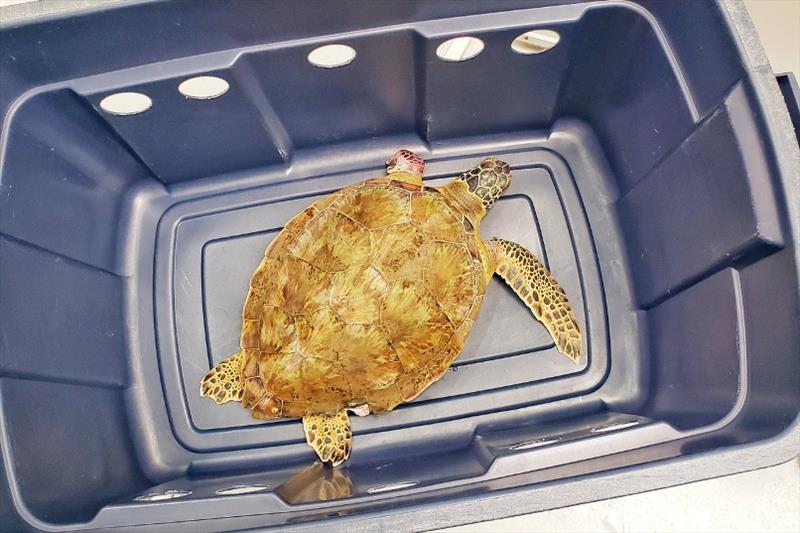
NOAA scientist saves entangled sea turtle
by NOAA Fisheries 8 Aug 2020 10:37 UTC

Sea turtle resting in a plastic bin after rescue. It's left flipper had been severed by fishing line © Dr. Jennifer Leo / Texas Parks and Wildlife Department Scientific
The Leo family was on board their sailboat when 7-year-old Kate spotted a fishing pole sticking straight up out of the water. As the family got closer it became clear a green sea turtle was entangled in the fishing line attached to the pole, dragging the pole through the water.
July 31
The injured green turtle, now known as "Twitch," is home again! Thanks to our partners at the Houston Zoo, the turtle was treated and recovered at NOAA's turtle hospital in Galveston, Texas.
Twitch was missing most of his left front flipper due to constriction fishing line around the flipper.
Due to the extent of the injury, the remaining left front flipper had to be amputated by Houston Zoo veterinarians. Twitch also received antibiotics to treat the infection and fully recovered from his injuries. Dr. Leo and her family also attended Twitch's release back into the bay.
June 2
In this situation, Kate's mom, NOAA biologist Dr. Jennifer Leo, is trained and experienced with rescuing marine life. She and her husband Seth, were able to grab the pole. They brought both the turtle and the pole safely onto the boat with the hopes of cutting the turtle free.
Unfortunately, the left flipper was severed. The Leo's knew the turtle needed help and called the Texas Sea Turtle Stranding and Salvage Network hotline. They covered the turtle with a wet towel and sailed back to the dock quickly. They took the turtle to NOAA's Galveston Lab to be evaluated and treated by the Houston Zoo animal care staff.
Thanks to Kate and the Leo's quick thinking, the sea turtle Kate named "Twitch" has a chance for rehabilitation and re-release back into the wild.
Kate was sad about the turtle and didn't want to talk about the experience, but her mother explained, "this is an opportunity to tell others about how important it is to keep our oceans clean and what to do if you see an animal in trouble."
All sea turtles in U.S. waters are listed as threatened or endangered under the Endangered Species Act. If you see marine life in trouble, you can help by calling trained responders, take photos, and stay with the animal if conditions are safe. The best way to help sea turtles in Texas is by calling (866) TURTLE5.
Remember, when you are at the beach or on the water, please follow safe marine life viewing guidelines and call the experts when you spot an animal in trouble.